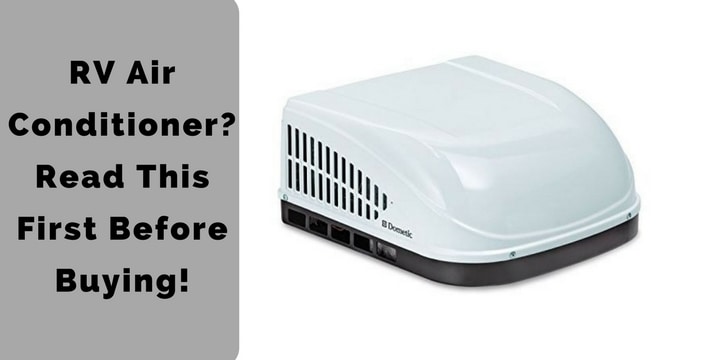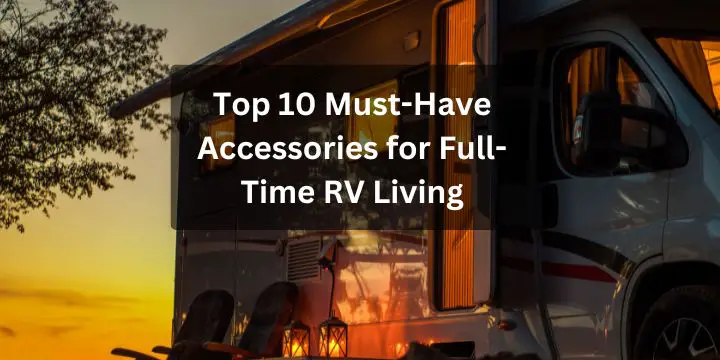RV Air Conditioner? Read This First Before Buying!
An RV air conditioner is a type of air conditioning system designed specifically for use in recreational vehicles. These units are typically installed on the roof of the RV and use either a compressor-based system or an evaporative cooling system to cool the air inside.
Compressor-based RV air conditioners work similarly to residential air conditioners, using a refrigerant to cool the air and a compressor to circulate the refrigerant through the system. These units are generally more powerful than evaporative cooling systems and are more effective at cooling the air in hot weather.
Evaporative cooling RV air conditioners, also known as swamp coolers, use water to cool the air. These units draw in outside air and pass it over a wet pad or filter, which cools the air through evaporation. While they are generally less expensive to purchase and operate than compressor-based units, evaporative cooling systems are less effective in humid weather and may not provide sufficient cooling during periods of high heat.
When choosing an RV air conditioner, it is important to consider the size and layout of your RV, as well as your individual cooling needs and preferences. Proper installation and maintenance are also key to ensuring that your RV air conditioner functions effectively and efficiently.
BTU POWERED
British thermal unit (BTU) is what is used to power these RV air conditioners. The standardized model is always labeled as having 13.5k BTU which means that they have 13,500 BTU. BTU is one of the best ways to measure power and you can use it to choose the type of air conditioner you should .buy. For example, if you do visit hot places or love your vehicle cool, a model with BTU above 13.5k is most appropriate. Therm brisk 2 can be chosen for this purpose. Poleman polar cub can be used if one desires to use power sparingly in order to save on cash.
SIZE MATTERS
The profile is also another consideration when buying an RV air conditioner. The profile is used to refer to the dimensions of the rooftop of the air conditioning unit, particularly the exterior portion. It is important both for vehicle height and fuel efficiency. Do not choose an RV ac unit that occupies almost the whole garage. Always look for a lower profile in case this happens. The problem associated with larger nits is that they tend to have fuel refuel and inefficiency. therefore in long run, they end up utilizing more fuel and incurring a high cost. They, however, to produce more power as compared to the smaller ones. The smaller RV ac units come at a discounted price and their cost in long run is low. They, however, don’t have the same power as the larger ones
DUEL USE PLUS A HEAT PUMP
For those aspiring to get more service from their RV ac unit should consider the ones with a heat pump. They must be willing to part with more money to get added convenience associated with an RV ac heat pump. The Coleman HP2 which has the ability to heat and cool due to its reversible valves is a good example eat pump model. These reversing valves are used to convert the cooling power into a heating system. The downside of these RV ac units is they can not be bought as add-ups and therefore one has to part with hundreds of dollars to buy the whole unit.
BRAND LOYALTY
Many buyers tend to be loyal to a brand that created their sturdy vehicle and camper or to larger names RV ac unit manufacturers. It has however been found that there is minimally differenced between well-known brands’ products and those of less known. It is much easier to find a spare part for popular brands. Coleman RV AC units are one of the most popular brands. They have many reviews and are found to be cheap going for $400-$500. The major Colemans brands include polar cub with a low profile, mach 3 all-purpose, powerful mach 15 and mach 8 with a low profile but much output. Other RV Air conditioner brands include domestic: Brisk II(13500 BTU) & Brisk II(15000 BTU) and Atwood: 15000 BTU with a heat pump and 13500 BTU.
RV AIR CONDITIONER TROUBLESHOOTING:
Video Overview: RV Troubleshooting: Air Conditioning
INSTALLATION AND MAINTENANCE
When you are purchasing a new ac unit you actually expect to install it by yourself. It is not a difficult task and also the manufacturer always has full instructions on installation. Any further problem can easily be solved by referring to articles on the internet. These could be additional items required to make your ac function efficiently. Choosing the wrong model can cause you to keep babysitting your unit due to frequent repair requirements.
Video Overview: How to Install a Coleman RV Air Conditioner
However, in the end, the RV air conditioner you choose to purchase will be determined by your needs and only you best know them. Therefore consider the above factor in relation to your need and make the best purchase.
Related Post: 45 RV Accessory Must-Haves for Your Travel Trailer

![Buying a Used RV: Everything You Need to Know. [Updated for 2023] Buying a Used RV: Everything You Need to Know. [Updated for 2023]](https://cdn-0.campertrailerreport.com/wp-content/uploads/2018/02/Buying-a-Used-RV-720x360.jpg)

